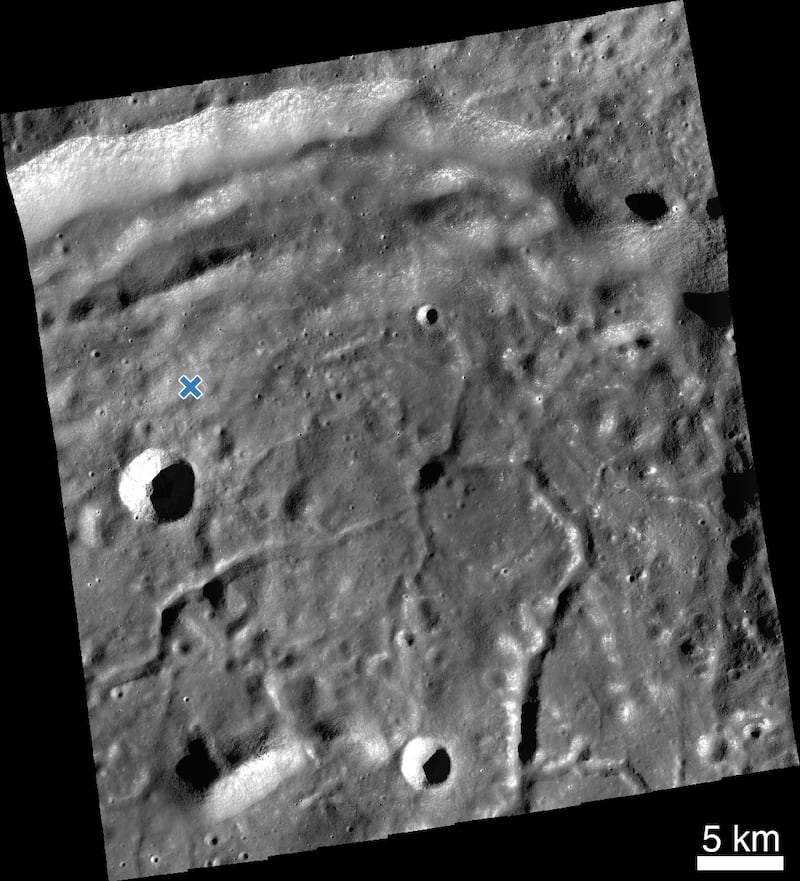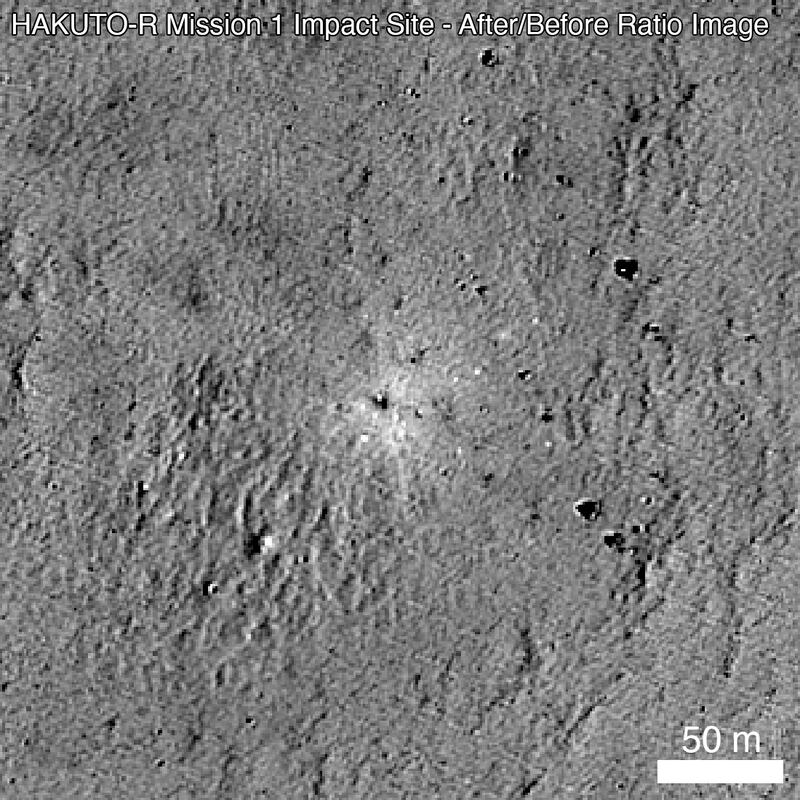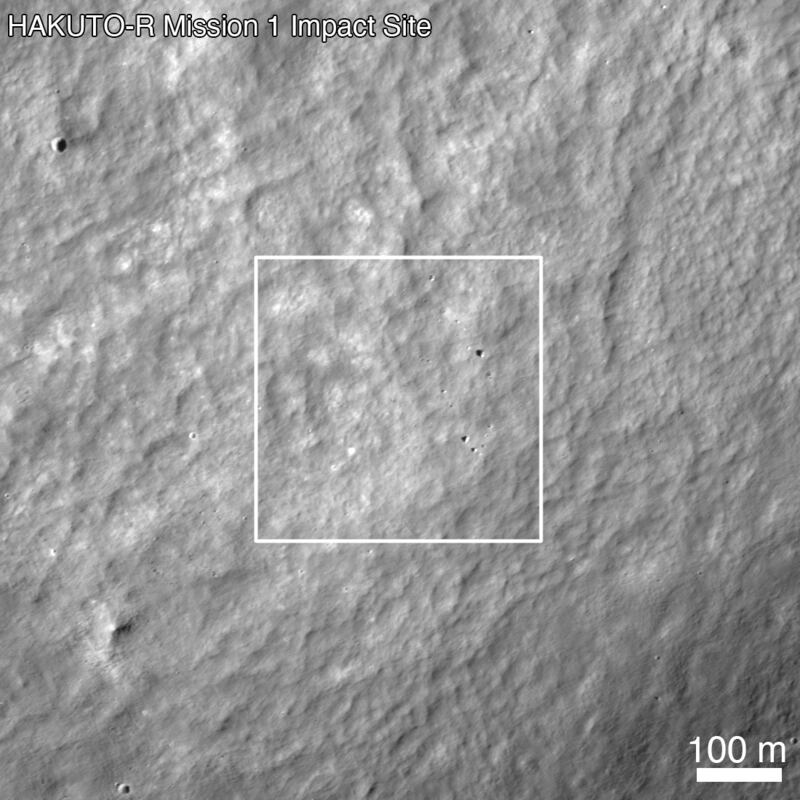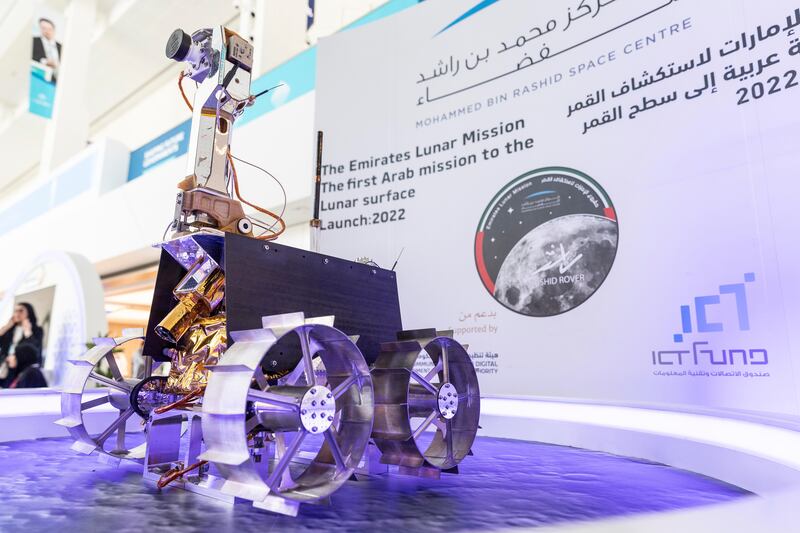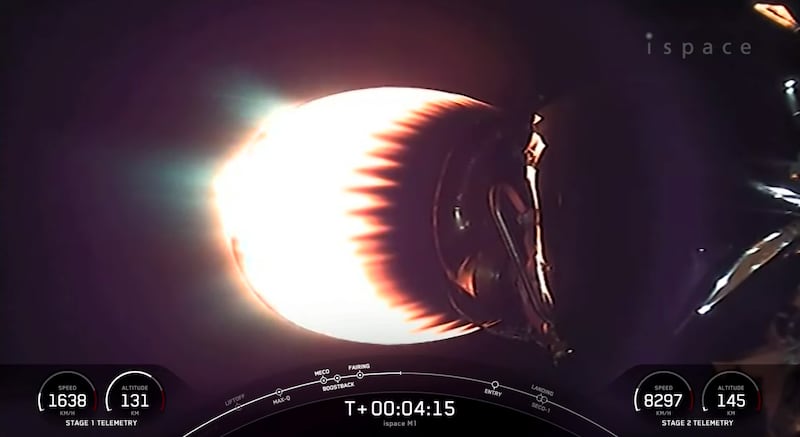A spacecraft that was carrying the UAE's Rashid rover crashed on the lunar surface because of an altitude miscalculation that caused it to run out of fuel.
The Hakuto-R Mission 1 lander, built by ispace, attempted a soft landing on the Moon on April 26, but hit the surface hard, scattering large pieces of debris across the touchdown site.
The Tokyo-based company revealed the results of the failure investigation on Friday, citing malfunctioning software over altitude controls as a major factor in the crash.
“The analysis reveals that the lander fully completed the entire planned deceleration process, slowing to the target speed of less than 1m/s in a vertical position at an altitude of approximately 5km above the lunar surface,” ispace said in a press release.
An “unexpected behaviour” took place with the lander's altitude measurement.
“While the lander estimated its own altitude to be zero, or on the lunar surface, it was later determined to be at an altitude of approximately 5km above the lunar surface.
Dubai announces new Moon mission – Rashid rover 2

“After reaching the scheduled landing time, the lander continued to descend at a low speed until the propulsion system ran out of fuel.
“At that time, the controlled descent of the lander ceased, and it is believed to have free-fallen to the Moon’s surface.”
ispace said that the most likely reason for the incorrect altitude estimation was that the software did not perform as expected.
Lunar landing site was changed
The company said another problem that contributed to the miscalculation was when the lunar landing site was changed in February 2021.
“It was determined that prior simulations of the landing sequence did not adequately incorporate the lunar environment on the navigation route resulting in the software misjudging the lander’s altitude on final approach,” ispace said.
“The analysis reveals that the cause of the lander’s failure to make a soft landing was due to the software, especially in the phase just prior to landing.
“This information will be incorporated into software design, as well as upgrades and expansion of the scope of preparatory simulations of the landing sequence for our future missions, including Mission 2 and Mission 3, to improve the accuracy of landing sequences.”
New images revealed crash site
A Nasa spacecraft captured images of the crash site on the Moon, including photos that showed four large pieces of debris scattered across the surface.
The Lunar Reconnaissance Orbiter took 10 images around the landing site. The orbiter identified change on the lunar surface believed to be a small crater or different parts of the lander body.
The UAE is developing a second rover called Rashid 2 that will be sent to space.
